Process
The mouse puppet was purely made for close-ups, or being digitally placed into larger scenes. The arms and legs needed to be able to move to be puppeteered through different actions. I decided to use an old-fashioned teddy bear design, which allowed the limbs to pivot 360 degrees around a single point where they had been sewn on. This meant making each limb separately, and attaching them all at the end. We also decided that the eyes should be removable, so they could be easily swapped out for other expressions.
I referenced patterns and drafted a simple mouse pattern out of felt sheets.
The first version was a bit too skinny, so I created a new pattern, adding some extra space and some darts to the body and hind legs. I removed the head and front legs from the old torso, and sewed them to the new one.
The next step was covering both of them in wool roving, using a felting needle to hook the fibers around each other and hopefully attaching the new felt to the “pre-felted” felt. It only had to last through filming. After the base coverage I went back over with the other colors to add in the details. Both of the wools I used for this project were bought second-hand, and turned out to be the perfect colors.
After all the detail was done it was time for wet felting. I had been disappointed in the texture of my felting, it had little holes all over it from the needle and research showed the answer was either to have bought higher-quality felt or have actually known what I’m doing, or somewhere in between. I decided the best way to smooth it out, and tangle more of the wool fibers into each other for a stronger result, was to use a different process to finish - wet felting. This involved soaking the project in a mixture of water and dish soap, and repeatedly rubbing it between my hands. I spent about a half hour on each small piece and a little more on the big ones.
The ears were too thin to felt a different color onto each side without the two poking through and mixing, so the backs of the ears were finished first before the inside was attached. The insides of the ears are pink felt sheets, felted in place with the needle and with the edges covered by the roving.
Finally. I could sew it all together. The limbs are attached to each other through the body, several stitches go through each limb and all the way through the torso, condensed around a single point so the limb can pivot. I used a pink thread to define the separation between the fingers on the paws, and embroider the nose. The tail is a single long felt triangle sewn to the back.
For the whiskers, I took a large embroidery needle and pulled the end of a wire through the nose. The wire was thin but this still took a lot of force. The whiskers aren’t really attached, but the effect works well enough for filming. The eyes are glass beads glued onto two pins so they can be stuck into the head or removed to swap for different expressions.
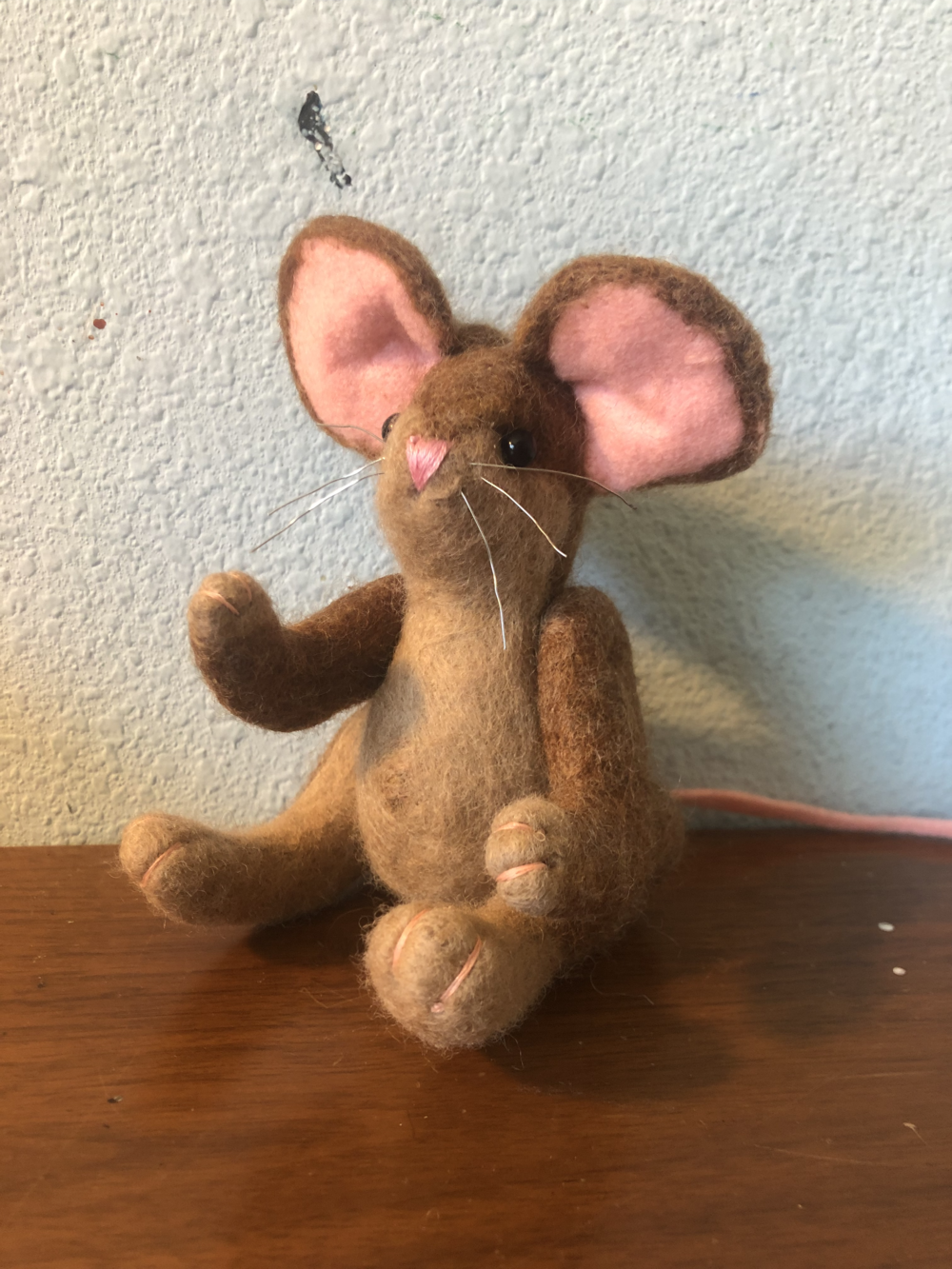
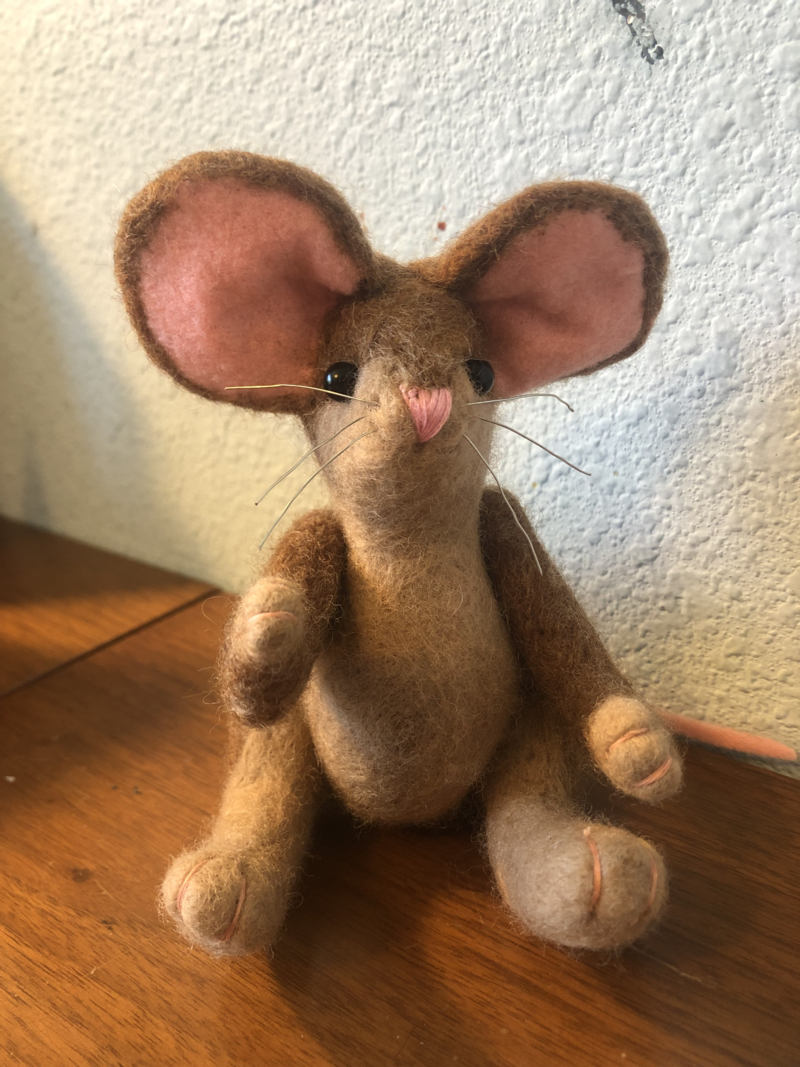
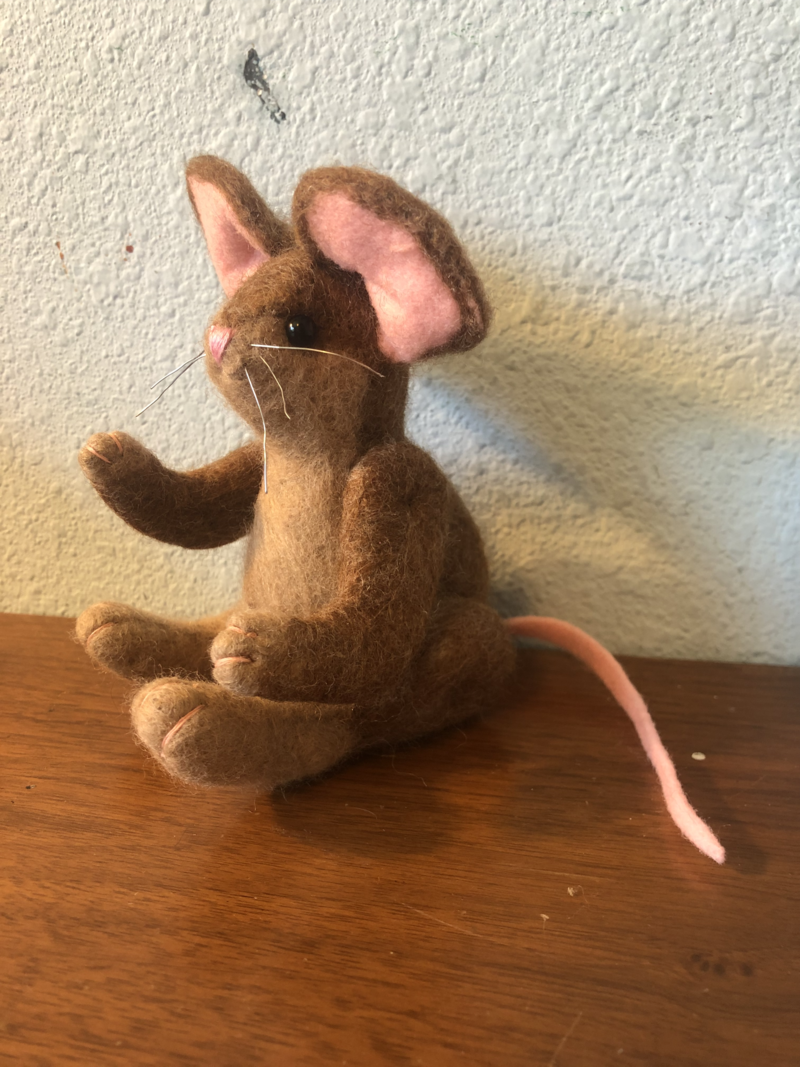
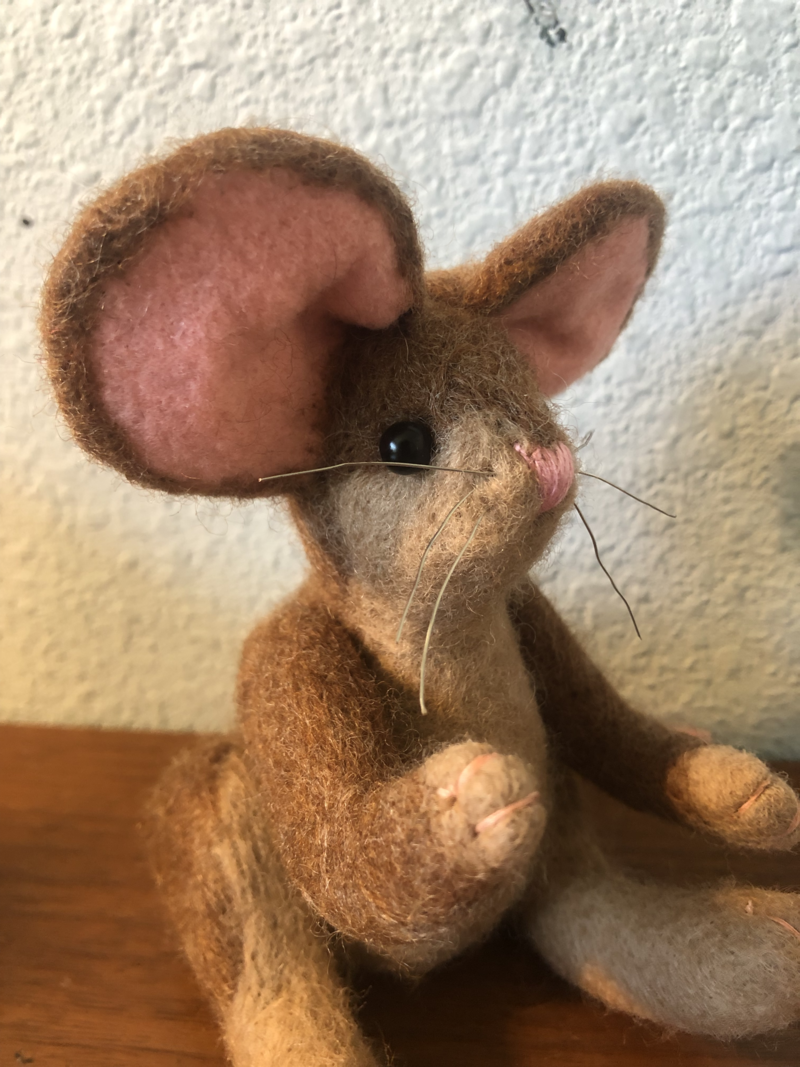
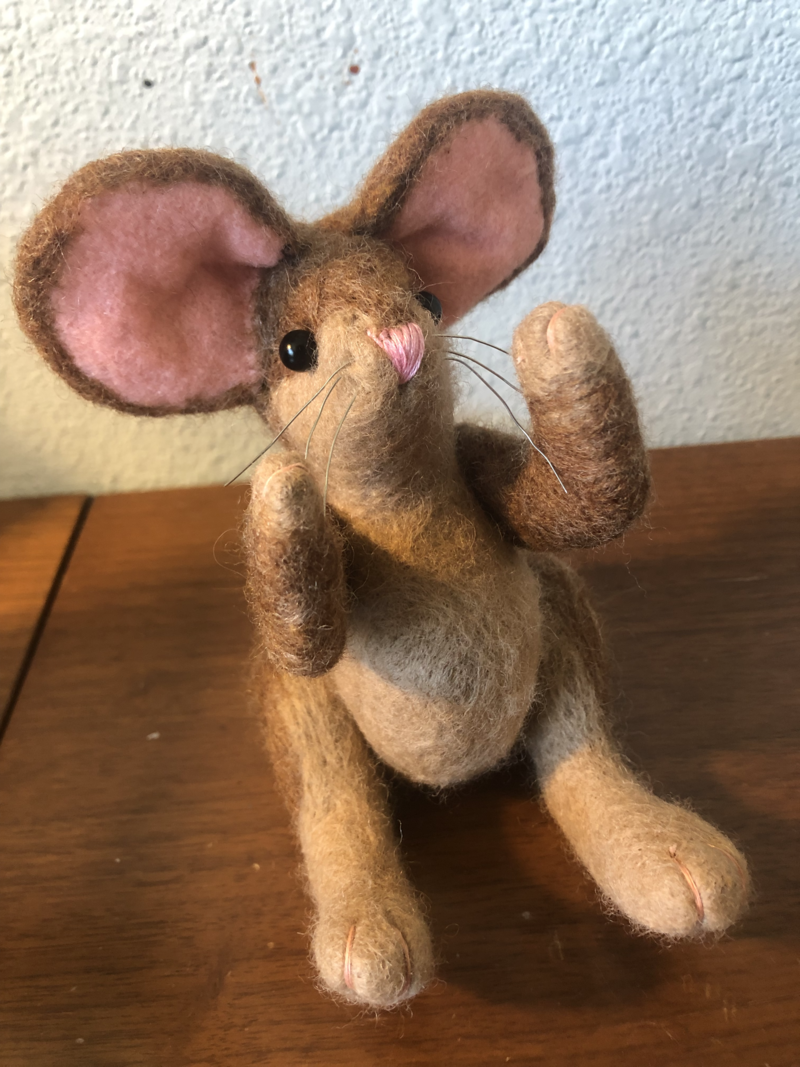

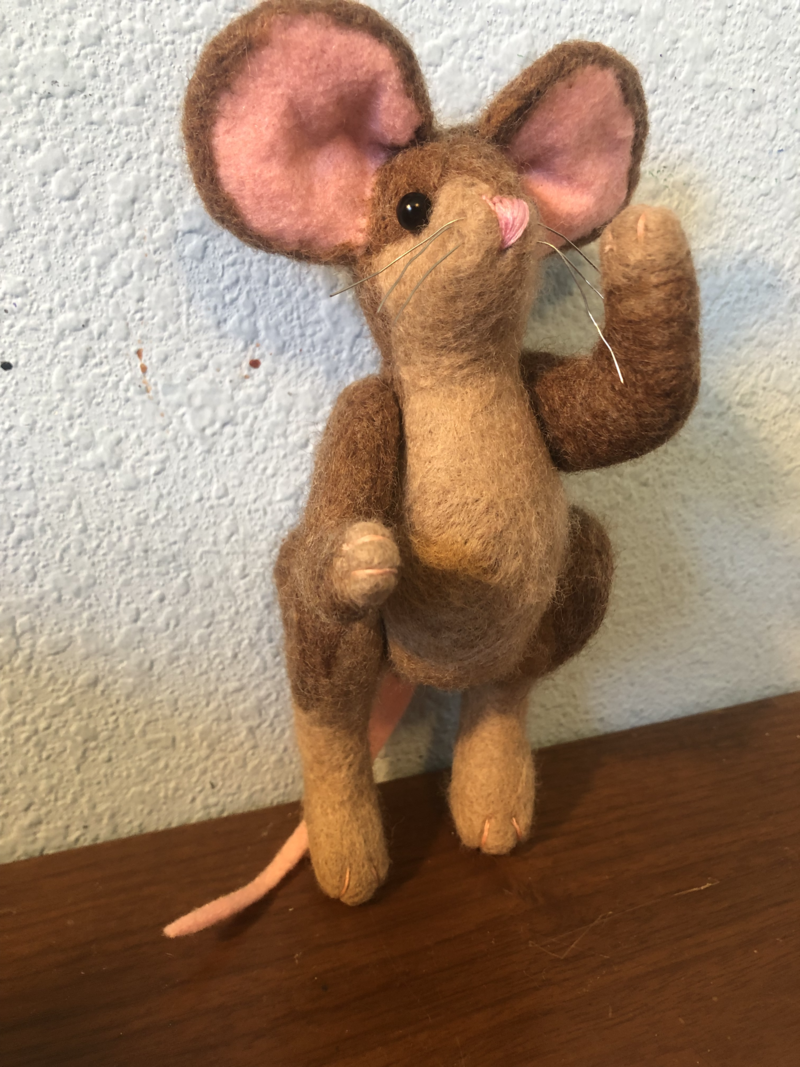
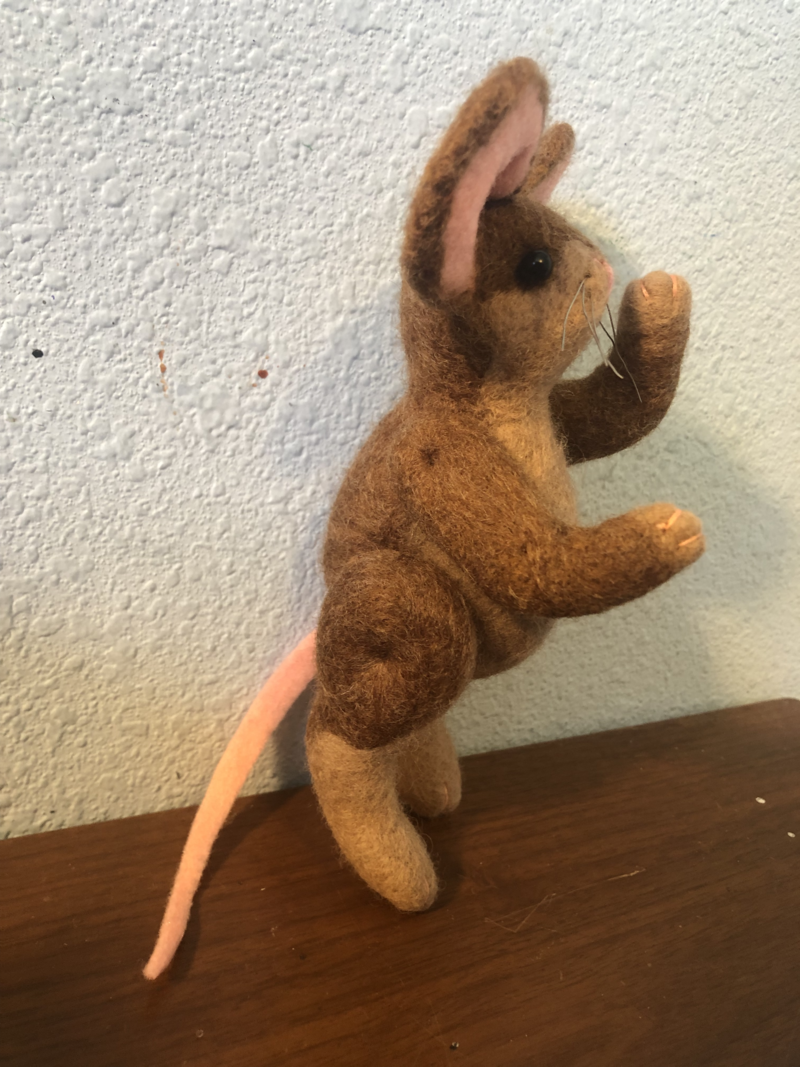
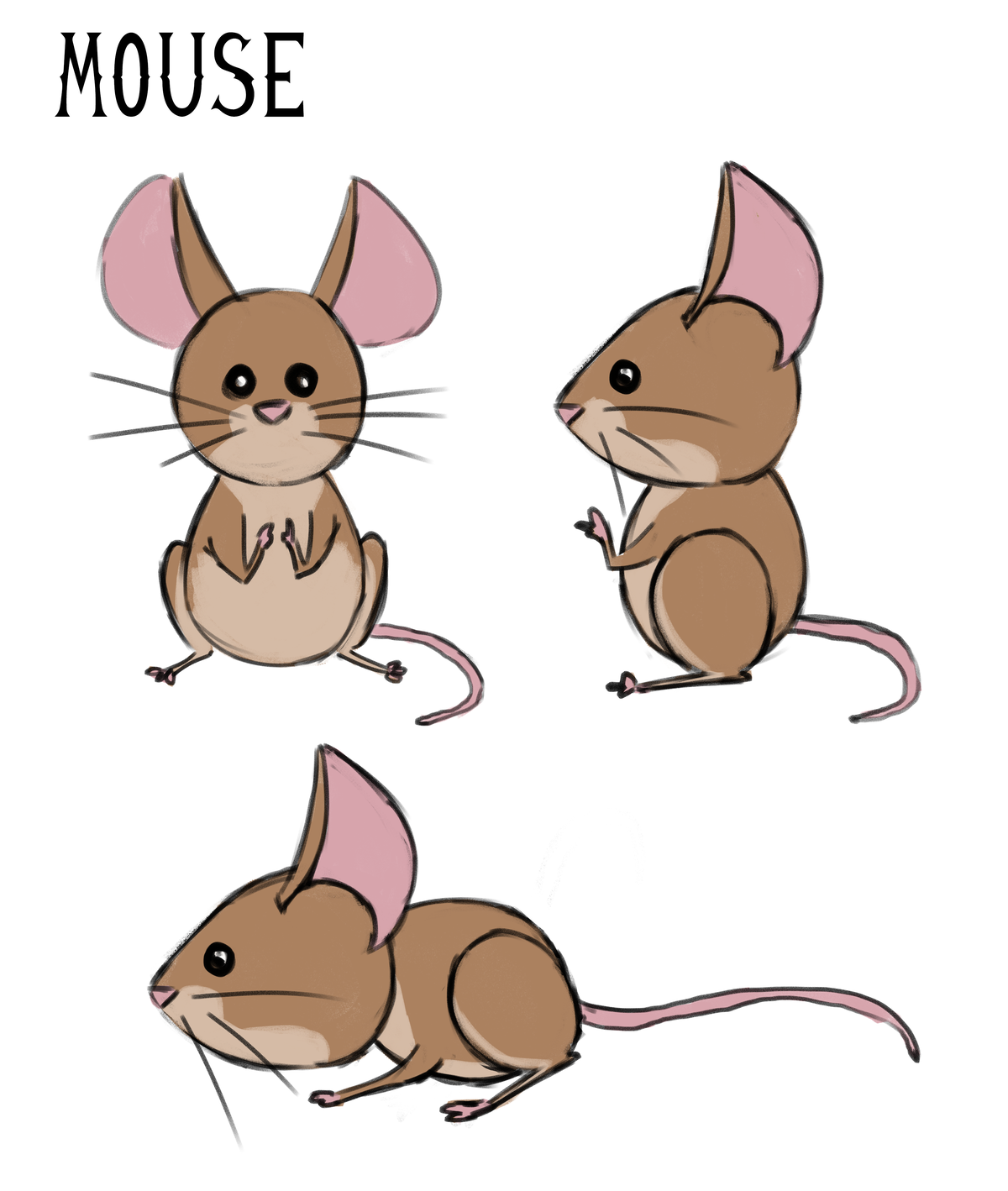
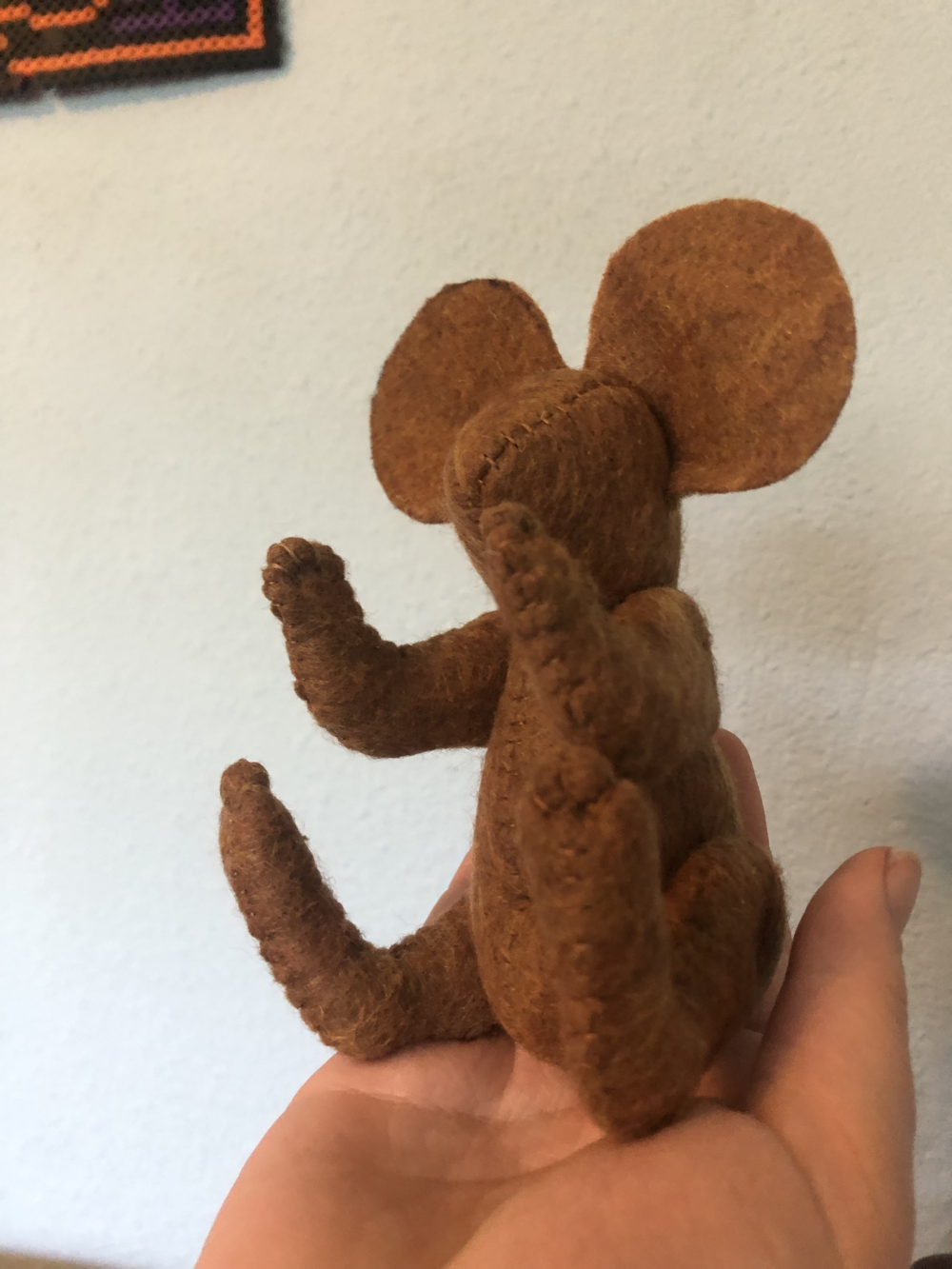
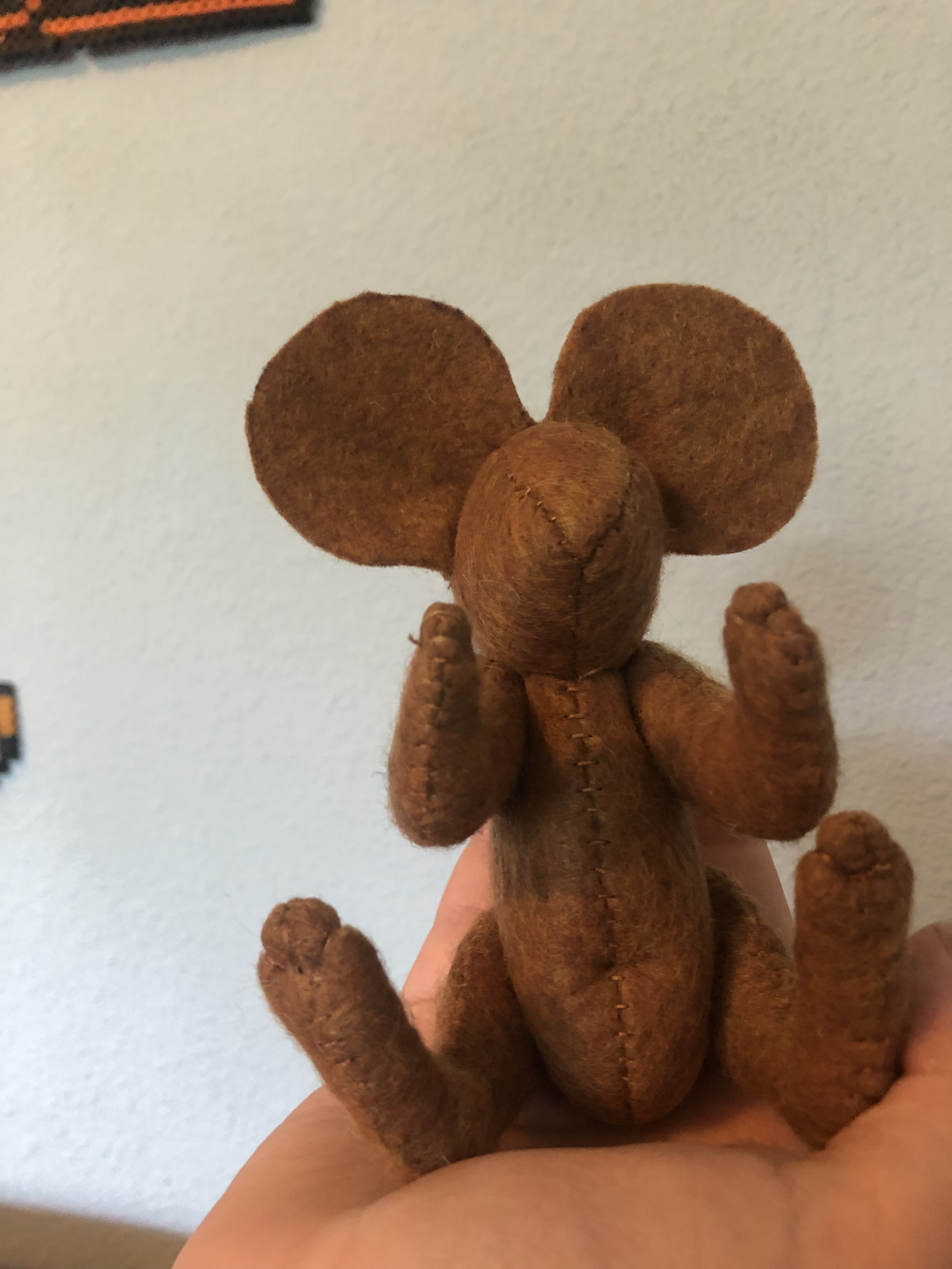
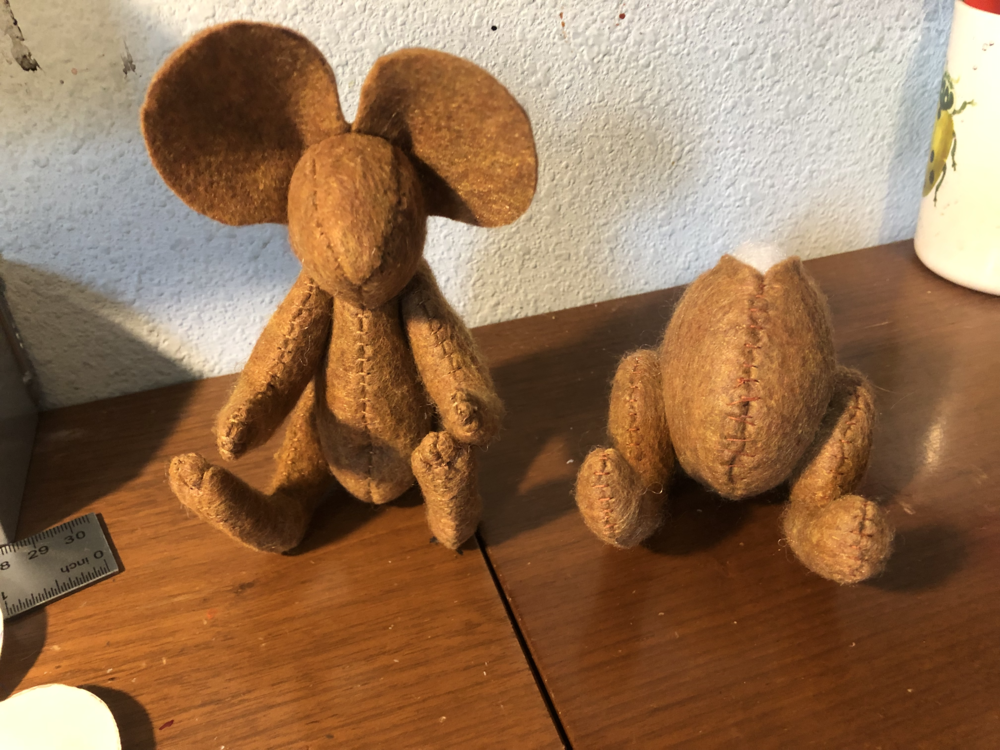
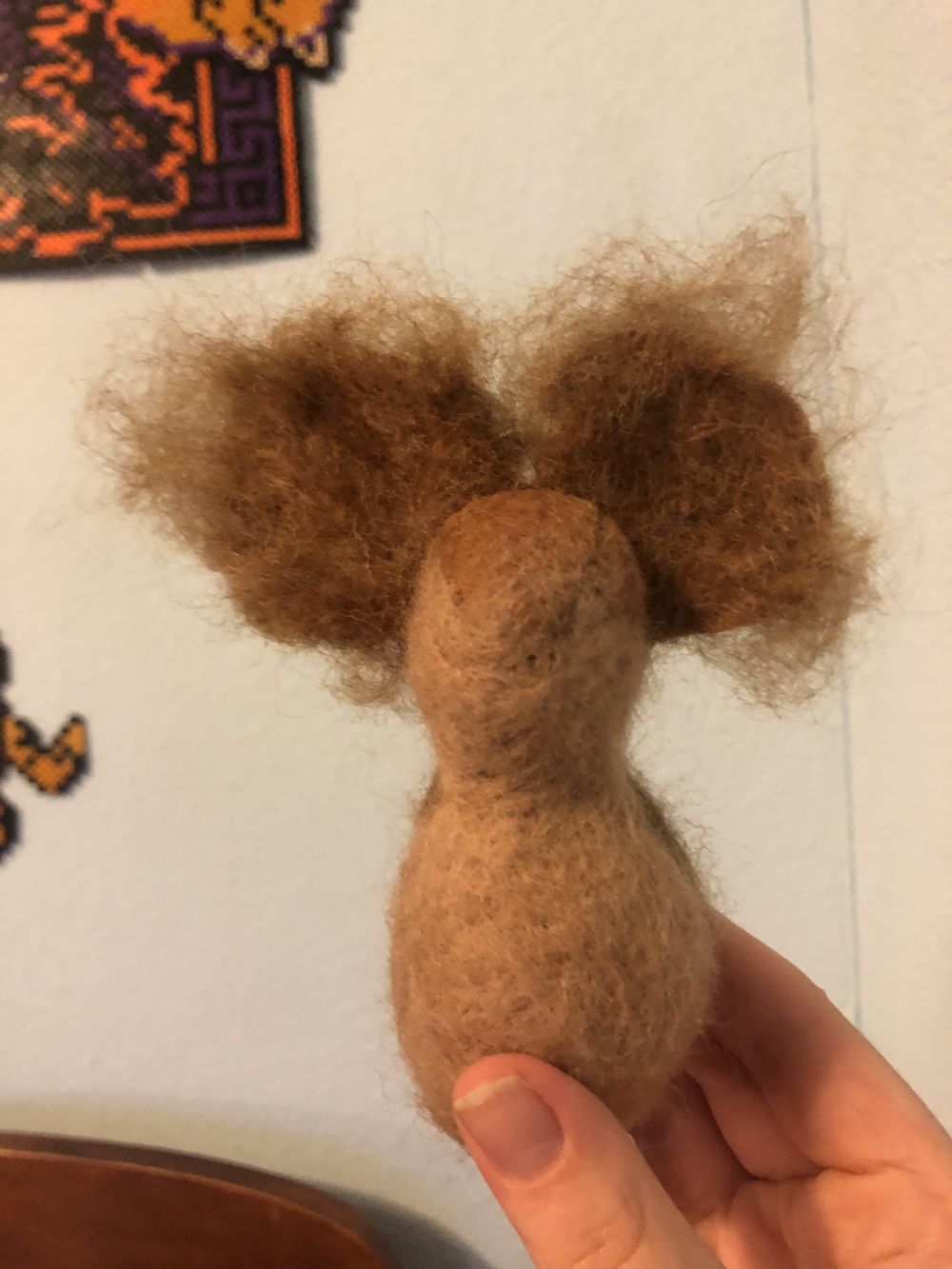
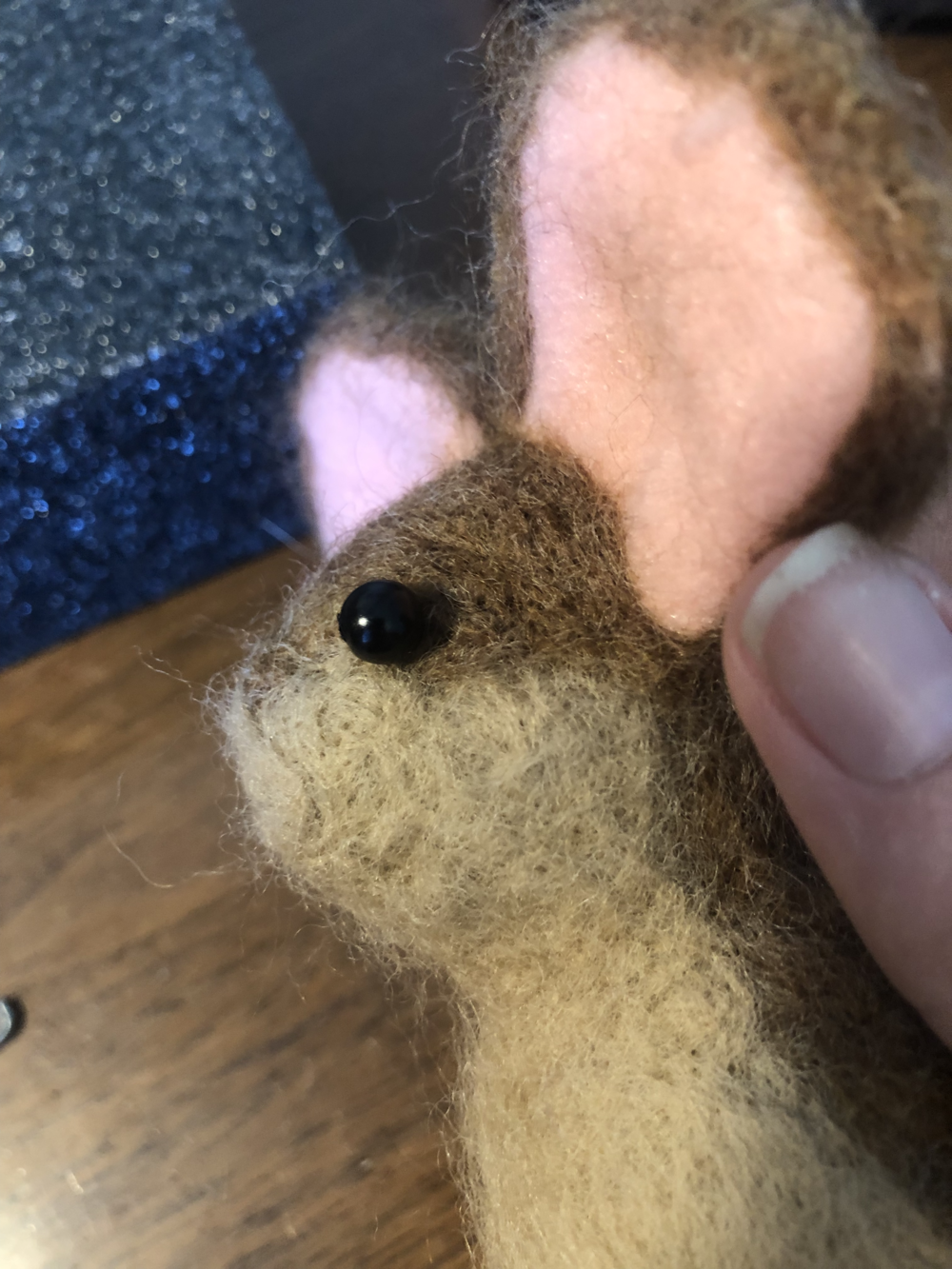


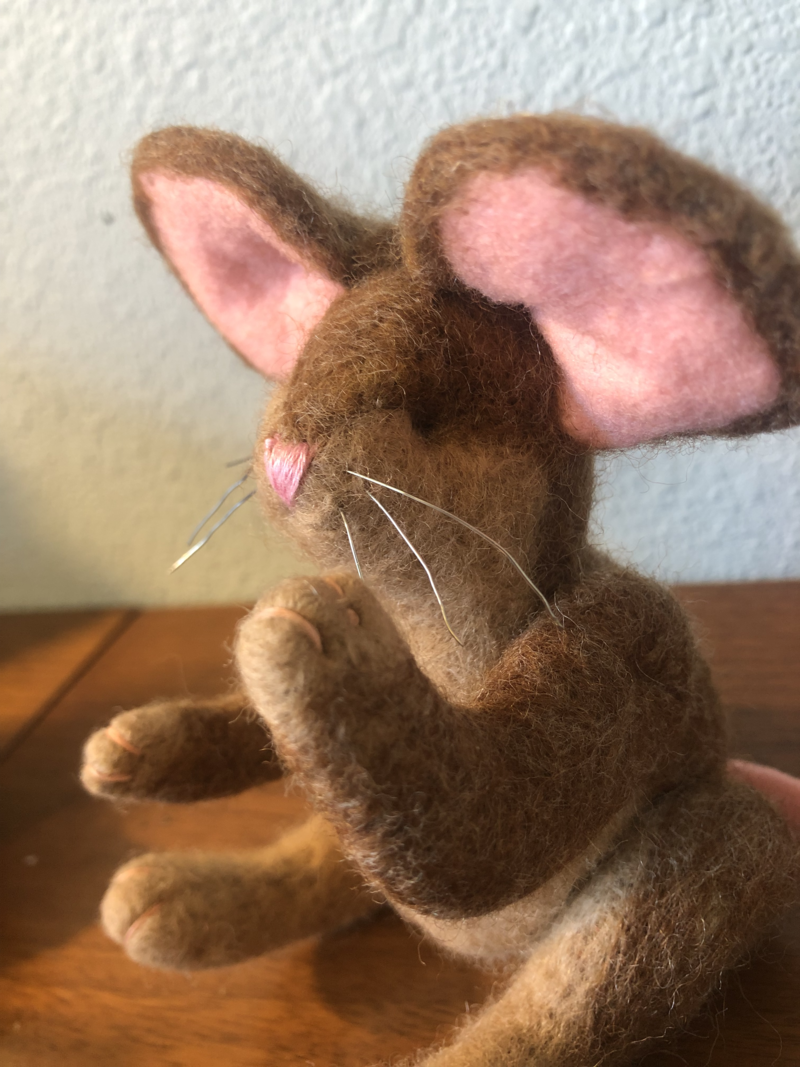
 Website template:
Website template: